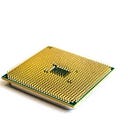The US-China Innovation Race to Dominate the Semiconductor Industry
Overview:
Today’s modern technological advancements are highly dependent on semiconductors or “chips”. Semiconductors are an essential component for technological innovation and growth. As these semiconductors are used in almost every device and technology, its role becomes even more significant. Over the past few decades, the semiconductor industry, along with the semiconductor equipment industry, has witnessed some radical changes. The demand is skyrocketing for semiconductors, as new opportunities and challenges are emerging. Artificial intelligence (AI), quantum computing, Internet of Things (IoT), and advanced wireless communications, notably 5G, all require cutting-edge semiconductor-enabled devices. To tap on this opportunity, two countries are competing hard to gain a competitive edge over each other. Those two countries are the US & China.
The Race to Innovation:
As of 2020, the U.S has been holding 48% of the semiconductor market share in terms of revenue. That is equivalent to $193 Billion. Some of the leading semiconductor companies are american companies such as Intel, AMD, Qualcomm, Apple, etc. In comparison to this, China is the world’s leading semiconductor importer, contributing to $350 billion worth of semiconductor imports in 2020, an increase of 14.6% from 2019. Almost every major semiconductor company earns more than 25% of their revenue from sales in China. Meanwhile, China has drafted a plan to become self reliant in the semiconductor industry, and to boost the domestic industry. This has led to an innovation race among the two countries, as one is the leading exporter, while the other is the leading importer. If there is any country which can ramp up its efforts to become a market leader in such a short period of time, then it will be China.
Challenges for U.S & China:
Both countries have their fair share of challenges in front of them, which can roadblock the future developments. China is planning to boost its domestic industry, but it will not become completely self-reliant until the next 10–15 years, because of a plethora of reasons. Some of the primary reasons are lack of industry knowledge, shortage of Semiconductor manufacturing equipment, trade restrictions, talent acquisition, etc.
Contrary to this, the US has a different set of problems, such as trade restrictions, dependence on foreign companies for manufacturing of chips, technological vulnerability etc. Apart from this, TSMC is one of the biggest suppliers of chips to American companies, but the recent tensions between US-China relations have put TSMC in a deadblock space. As TSMC is a common link between the two countries, its significance increases even more.
THE TAKEAWAY:
The US-China trade is not limited to the two countries, as it has global impact. Only time will reveal who will have edge towards the other, but in the meantime the U.S. is way ahead in the semiconductor industry.
